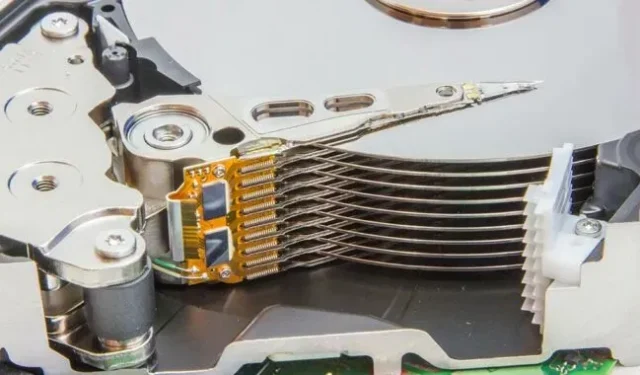The report says Microsoft will soon require SSDs for new PCs, but does it really matter?

According to a report from Tom’s Hardware, Microsoft plans to force PC manufacturers to ship SSD boot drives on all Windows PCs starting in 2023 or 2024, ending the days of spinning hard drives for most PCs that still include them.
Trendfocus analyst John Chen claims that Microsoft initially tried to make the change in 2022, but resistance from manufacturers meant “it was pushed back to next year.”Microsoft and PC makers are still debating timelines and possible exceptions, “but things are still changing.”
Ars reached out to Microsoft, Dell, HP, Lenovo and Acer for comment; most did not answer. A Dell spokesperson noted that almost all of its systems already ship with SSDs, but could not confirm or deny the analyst’s claims.
This brings us to a good conclusion: the vast majority of new systems, from low-end laptops to premium gaming desktops to ultrabooks, come with SSD boot drives and have been shipping with them for years. Some SSDs are better than others—cheap eMMC storage in a budget laptop will be nowhere near as fast as the cheapest NVMe SSD—but these days, only the most budget-friendly of budget desktops still use HDDs as primary storage.
Microsoft also maintains requirements for PC manufacturers that differ from the basic Windows system requirements. Manufacturers had to supply and enable features like secure boot and Trusted Platform Module (TPM) for years before Windows 11 started requiring them for all Windows installations. In other words, even if PC manufacturers can’t sell you a computer with a spinning hard drive as a boot drive, it’s unlikely that Windows will refuse to install on a spinning hard drive if you need to for some reason. The current system requirements for Windows 11 call for a storage capacity of 64 GB or more, but do not specify what type of storage to use.
A quick look at the Dell and HP websites and Newegg listings of new desktops suggests that the requirement for solid state drives will primarily affect two market segments for US PC buyers. One is at the very bottom of the consumer desktop market, where several Inspiron and Pavilion systems still ship without SSDs. The other is the business desktop market, where Optiplex, Vostro, and ProDesk systems include hard drives in their base models. The requirement could also hit more price-sensitive “emerging markets”outside the US harder, Chen said.
Systems that still use spinning hard drives are overwhelmingly using 1TB models. Given that a brand-name 1TB hard drive and an entry-level 250GB or 500GB SSD can be purchased for $40 to $50, manufacturers should at least be able to switch to them without raising prices (although manufacturer prices for PC components are different from end-user components). Trading that capacity for vastly increased speed is the right move for most people: not everyone has the 1TB of data they need to store locally, but everyone will notice and benefit from faster downloads, app and game launch times, and multitasking.
Although they mostly disappear from consumer PCs, hard drives continue to evolve. Most of the efforts are now focused on increasing the capacity of disk platters using new data recording technologies. Seagate says it plans to release 100TB hard drives by 2030, while Western Digital has announced large 22TB and 26TB hard drives for data centers and other customers requiring high-capacity storage.
Leave a Reply